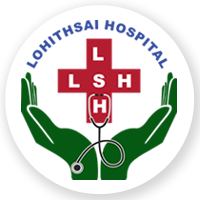Cardiology
Interventional cardiology is a subspecialty of cardiology that focuses on using catheter-based techniques to diagnose and treat heart conditions. These minimally invasive procedures, such as angioplasty and stent implantation, are used to manage coronary artery disease, congenital heart defects, and other cardiovascular conditions. Interventional cardiologists employ advanced imaging techniques, like angiograms, to visualize blood flow in the coronary arteries and guide the placement of stents, which help keep arteries open and prevent heart attacks. This field has significantly improved the prognosis and quality of life for patients with heart disease, reducing the need for more invasive surgeries.
At Lohithsai Hospital in Siddipet, comprehensive care for common chest pain and heartburn is provided, ensuring patients receive timely and effective treatments. The hospital is well-equipped with the latest technology for performing angiograms and cardiac catheterization (heart stent) implantation, essential for diagnosing and treating blockages in the coronary arteries. By offering these advanced interventional cardiology services, Lohithsai Hospital helps manage acute and chronic cardiovascular conditions, ensuring patients in Siddipet have access to high-quality, life-saving cardiac care close to home.
Angiogram
- Diagnostic imaging technique using X-rays to visualize blood vessels
- Helps identify blockages or abnormalities in the coronary arteries
- Involves injecting a contrast dye through a catheter into the blood vessels
Stent Implantation
- Procedure to insert a small mesh tube (stent) into a narrowed or blocked arterya
- Stents help keep the artery open, improving blood flow
- Often used in conjunction with angioplasty (balloon dilation of the artery)
Angioplasty
- Minimally invasive procedure to widen narrowed or obstructed blood vessels
- Uses a balloon-tipped catheter to expand the artery
- Often performed before stent placement
Catheter-Based Procedures
- Techniques involve inserting thin, flexible tubes (catheters) into blood vessels
- Allows for diagnosis and treatment without open surgery
- Reduces recovery time and hospital stay



